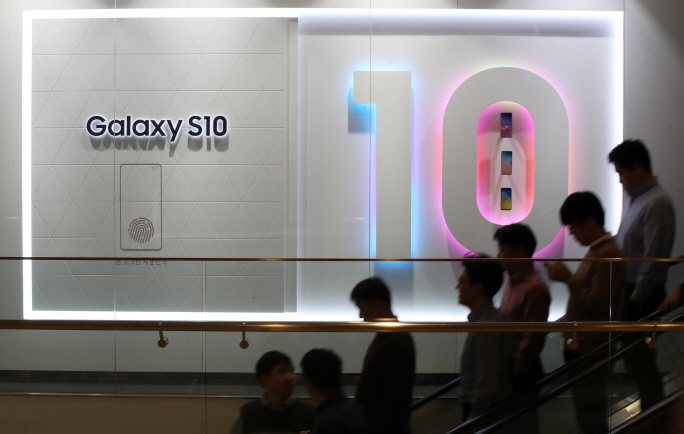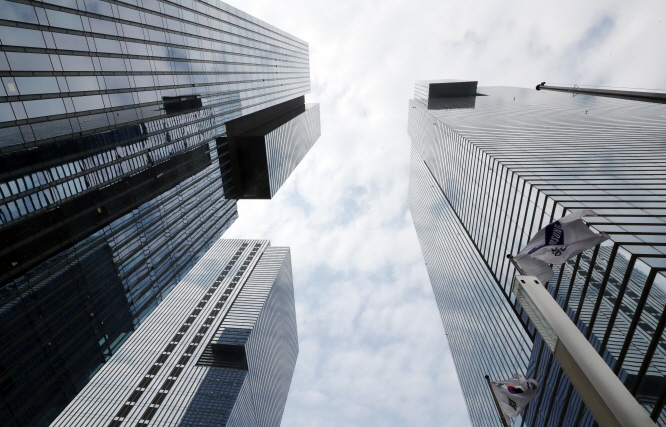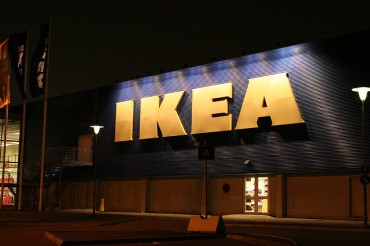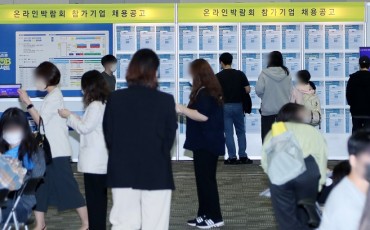SEOUL, Apr. 30 (Korea Bizwire) — Samsung Electronics Co. on Tuesday cautiously expected an uptick in chip demand for high-value products and mobile devices in the second half of the year, after delivering a 60 percent drop in its first-quarter earnings on weak memory chip prices.
The South Korean tech giant posted a net profit of 5.04 trillion won (US$4.3 billion) in the January-March period, the lowest since the third quarter of 2016, its regulatory filing showed.
Its operating profit dropped 60.1 percent on-year to 6.2 trillion won, and sales slipped 13.5 percent to 52.4 trillion won over the cited period, it said. The figures were in line with its market guidance released earlier this month.
The world’s largest memory chip and smartphone maker had warned investors of weaker-than-expected quarterly earnings, citing sluggish memory chip and display sales.
“First quarter earnings were weighed down by a slump in memory chips and displays, although the newly launched Galaxy S10 smartphone logged solid sales,” Samsung said in a release.
Samsung expected the prices of memory chips to continue to remain downward in the second quarter but anticipated the market conditions to improve in the second half.
“For the second half of 2019, the company expects memory chip demand for high-density products to increase but uncertainties in the external environment will persist,” Samsung said. “A further recovery is seen for the display business as demand for flexible screens is set to rise on new smartphone launches.”
Shares of Samsung Electronics closed at 45,850 won, down 0.65 percent from the previous session’s close.
The semiconductor business slumped due to a fall in memory chip prices as data centers continued to adjust their inventory levels, it said.
Samsung is the world’s biggest producer of DRAM and NAND flash chips, and a major smartphone panel supplier for U.S. tech giant Apple Inc., which has suffered tepid sales of iPhones in China.
DRAM chip prices, mostly used in computer servers, fell more than 20 percent on average in the first quarter compared with three months earlier as major data centers have been adjusting their high inventory levels of memory chips, market tracker DRAMeXchange said, seeing no rebound in the near term.
Prices for NAND memory, which is used in mobile devices for data storage, were also hurt by slowing smartphone demand as more consumers are waiting longer to replace their handsets.
Samsung said it reflected one-off costs of replacing some of its faulty DRAM products for server clients in the quarterly report, but the problems were fixed and operations are now back to normal.
“There were some quality issues related to 10-nanometer (1x) DRAM products for servers. We fixed the technical problems, and the production is back to normal,” a Samsung official said during a conference call. “We will continue to improve the quality of the nanometer production line in light of this issue.”
While Samsung’s mainstay memory chip business is expected to grapple with a price slump in the near team, market watchers see a better pricing environment for chips later this year.
“The memory chip prices are likely to bottom out in the coming months as manufacturers are trimming their supplies to deal with a supply glut,” Choi Do-yeong, an analyst at Shinhan Investment Corp., said.
“The overall semiconductor market is expected to rebound in the latter half when the inventory level at data centers stabilize and demand for high-density NAND flash chips pick up in the peak season.”

Employees of Samsung Electronics Co. walk by a signboard for the Galaxy S10 at its Seoul office on March 27, 2019. (Yonhap)
The company said it has been optimizing its fabrication lines to improve efficiency of its production process during the low demand season and help deal with a supply glut in the memory chip market.
“While we have routinely carried out the line optimization, it will be held in a larger scale this time, which could lower the production level,” the official said. “The scope of the manufacturing hasn’t been confirmed yet, but we will flexibly decide the production capacity in response to the market conditions.”
Samsung’s capital expenditures totaled 4.5 trillion won in the three-month period, with 3.6 trillion won spent on semiconductors.
Profitability in the IT and mobile communication division also slumped in the first quarter from a year earlier due to toughening competition in the lower-end segment. Revamping the company’s mass-market lineup also led to a yearly decrease in sales volume of its smartphones, the company noted.
Samsung said it sold 78 million smartphones and 5 million tablets in the first quarter, expecting its flagship Galaxy S10 and lower-end Galaxy A series to show robust performance this year.
The display panel business suffered a quarterly loss for the first time in three years due to reduced demand for flexible displays and a supply glut in large displays.
To improve earnings, Samsung vowed to focus on discovering new applications in laptops and foldable devices to boost demand of its panels in various segments.
The system LSI and foundry businesses posted robust performances thanks to smartphone application processors, the “brains” for handsets.
Samsung said its earnings from its network business also improved, buoyed by the launch of 5G telecommunication services in South Korea earlier this month.
The tech behemoth’s consumer electronics division fared well on the back of increased sales of premium TVs, such as QLED TVs and ultra-large size models, it said.
Samsung said it will focus on strengthening leadership in the premium segment ranging from TV and smartphone markets to tackle challenges due to flattening global demand.
In regard to the delayed launch of its first foldable phone, initially slated for last week in the United States, Samsung said it is looking into the cause of problems related to its folding screen and plans to announce its schedule in the coming weeks.
“We are thoroughly analyzing the issues to find solutions and plan to update the schedule in the next few weeks,” a Samsung official said. “Our conviction and commitment hasn’t changed. We will continue to develop new form factors and actively respond to customers in the market.”
As part of efforts to boost sales in the premium market, Samsung said it plans to introduce the Galaxy S10 5G in the U.S. market next month, following its launch in the domestic market earlier this month. It also pledged to step up marketing efforts for its 5G modems and chipsets to expand presence in the emerging wireless market.
In the mid to long term, the tech firm vowed to strengthen the competitiveness of key businesses by expanding investment in non-memory and foundry businesses, and developing various applications for autonomous vehicles and artificial intelligence.
As part of the broader plan to nurture a new growth engine, Samsung last week announced plans to invest 133 trillion won by 2030 to expand its non-memory and foundry business to take the top spot in the high-tech sector with a strong growth outlook.
The latest move comes as Samsung has been actively promoting its latest nanometer fab technology based on extreme ultraviolet lithography (EUV) in hopes of catching up to Taiwan’s TSMC, which holds an over 50 percent share of the global foundry market.
According to global research firm Gartner, the value of the non-memory chip market was estimated at $346.6 billion last year — 65 percent of the total — more than twice that of the memory chip sector.
Meanwhile, President Moon Jae-in visited Samsung’s fabrication line in Hwaseong, south of Seoul, earlier in the day to meet with Samsung Vice Chairman Lee Jae-yong and other senior officials.
Moon pledged government support for the company’s plan to foster new growth drivers in the semiconductor business.
(Yonhap)







